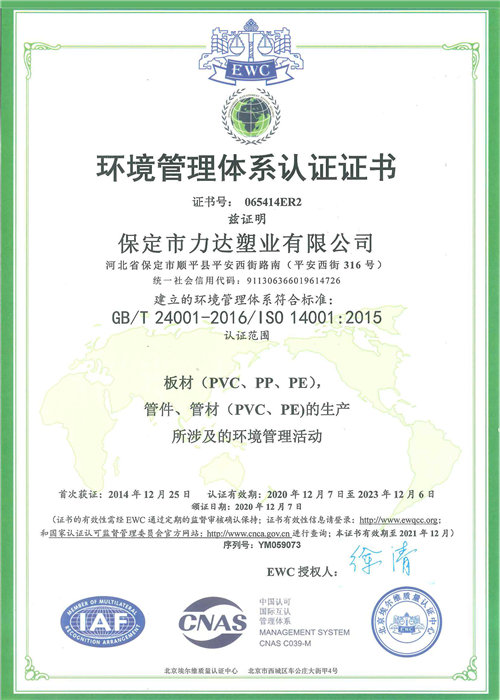Nov . 19, 2024 19:49 Back to list
Choosing the Right Pipes and Fittings for Your Plumbing Projects
Understanding Pipes and Fittings A Comprehensive Overview
Pipes and fittings are essential components in various systems, including plumbing, HVAC, and industrial applications. Their primary function is to transport fluids, gases, and sometimes solids from one point to another efficiently and safely. This article explores the significance of pipes and fittings, their different types, applications, and installation considerations.
The Importance of Pipes and Fittings
Pipes and fittings play a crucial role in the infrastructure of modern society. They facilitate water supply in homes, sewage systems, gas distribution, and even the intricate systems in large industrial plants. Understanding the materials, dimensions, and specifications of pipes and fittings is vital for ensuring the efficiency and longevity of these systems. Choosing the right components can help prevent leaks, optimize flow rates, and withstand various pressures.
Types of Pipes
1. PVC (Polyvinyl Chloride) PVC pipes are lightweight, durable, and resistant to corrosion. They are commonly used for drainage, irrigation, and some plumbing applications due to their affordability and ease of installation. However, they are not suitable for hot water applications as they can warp at high temperatures.
2. CPVC (Chlorinated Polyvinyl Chloride) CPVC pipes are similar to PVC but have a higher temperature tolerance, making them suitable for hot water applications. They are used in residential plumbing systems and are more resistant to chemical exposure.
3. PE (Polyethylene) PE pipes are flexible and used primarily for water supply lines and gas distribution. Their resistance to impact and low temperatures makes them ideal for underground installations.
4. Copper Copper pipes have been a staple in plumbing for decades due to their durability and resistance to bacteria. They are extensively used in water supply lines, heating systems, and refrigeration applications. However, copper is more expensive than plastic alternatives.
5. Steel Steel pipes, including galvanized and stainless steel, are used in applications requiring high strength and pressure. They are commonly found in gas pipelines and industrial applications but can be susceptible to corrosion if not properly treated.
6. Concrete Concrete pipes are primarily used for sewage and drainage systems due to their strength and ability to handle heavy loads. They are often found in municipal infrastructure projects.
Types of Fittings
Fittings are used to connect pipes, change their direction, or alter their diameter. Understanding the types of fittings available is crucial for creating a functional piping system
1. Couplings Couplings connect two straight pipes, enabling the extension of pipe length. They can be threaded, slip-on, or compression types.
pipes and fittings

2. Elbows These fittings change the direction of the piping system, typically at 90 or 45 degrees, allowing for the accommodation of different layouts.
3. Tees Tees are used to split the flow into two different directions. They can be used for branch connections and are available in various sizes.
5. Caps Caps are fittings that seal the end of a pipe, preventing the flow of fluid or gas from escaping the system.
6. Valves Valves control the flow of liquids and gases within a piping system. Different types of valves, including gate valves, ball valves, and check valves, serve specific functions.
Installation Considerations
Proper installation of pipes and fittings is crucial to ensure the reliability and efficiency of the system. Here are several key considerations
- Material Compatibility Ensure that the chosen pipes and fittings are compatible with the type of fluid they will carry and the environmental conditions they will face.
- Pressure and Temperature Ratings Check the specifications for pressure and temperature ratings to ensure the system can handle expected conditions.
- Proper Sizing Selecting the correct diameter for pipes and fittings is essential to maintain optimal flow rates and prevent blockages or leaks.
- Sealing Techniques Use appropriate sealing methods, such as thread seal tape or pipe dope, to prevent leaks at joints.
- Regulatory Compliance Ensure that installations adhere to local building codes and regulations to ensure safety and functionality.
Conclusion
Understanding pipes and fittings is essential for anyone involved in construction, plumbing, or industrial systems. Their diverse materials and types cater to a myriad of applications, and making informed choices can significantly impact the performance of the entire system. By considering factors like compatibility, pressure ratings, and installation techniques, engineers and contractors can ensure the long-term reliability and efficiency of the piping systems they design and install. In an increasingly complex world, this knowledge is not just beneficial but vital for maintaining public safety and infrastructure resilience.
-
PVC Grey Sheet for Extraction: Chemical Resistant & Durable
NewsAug.19,2025
-
Durable PVC Pipe Fittings for Plumbing & Irrigation Needs
NewsAug.18,2025
-
HDPE Steel Belt Reinforced Spiral Corrugated Pipe | High Strength
NewsAug.17,2025
-
HDPE Pipe Fittings: Durable, Leak-Proof Solutions
NewsAug.16,2025
-
Premium CPVC Sheet: High-Temp & Chemical Resistant Solutions
NewsAug.15,2025
-
Durable PPR Pipe for Hot & Cold Water Systems - Easy Install
NewsAug.14,2025

